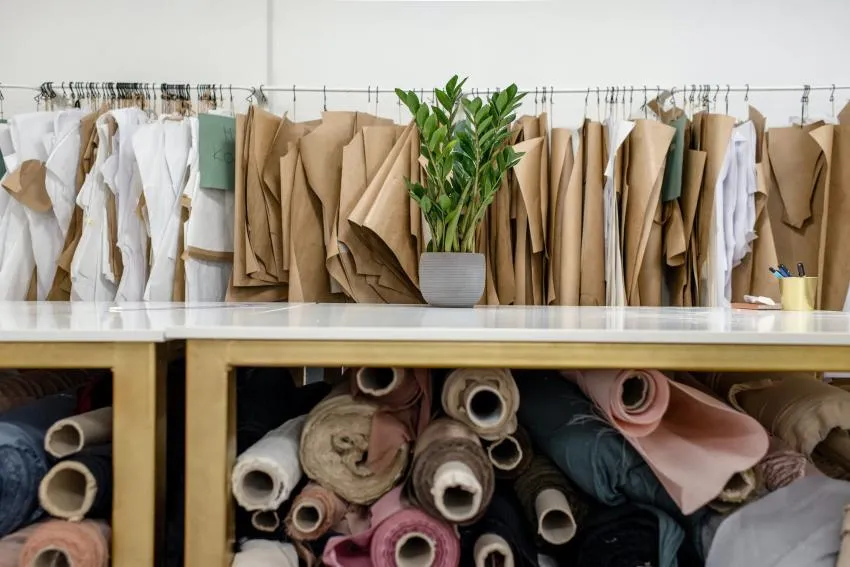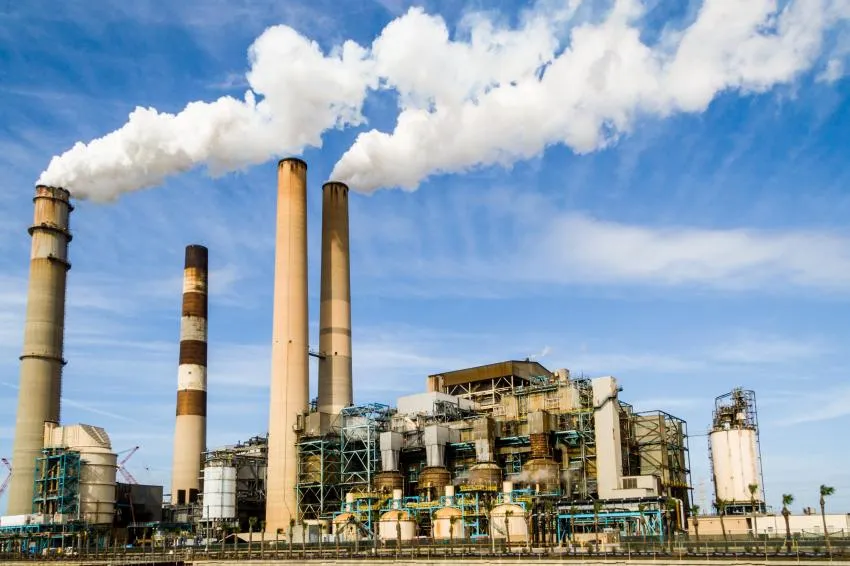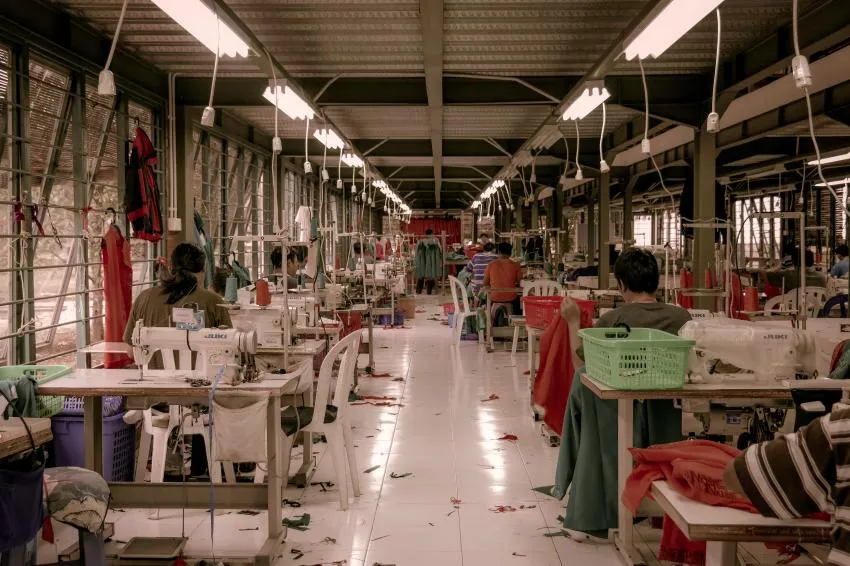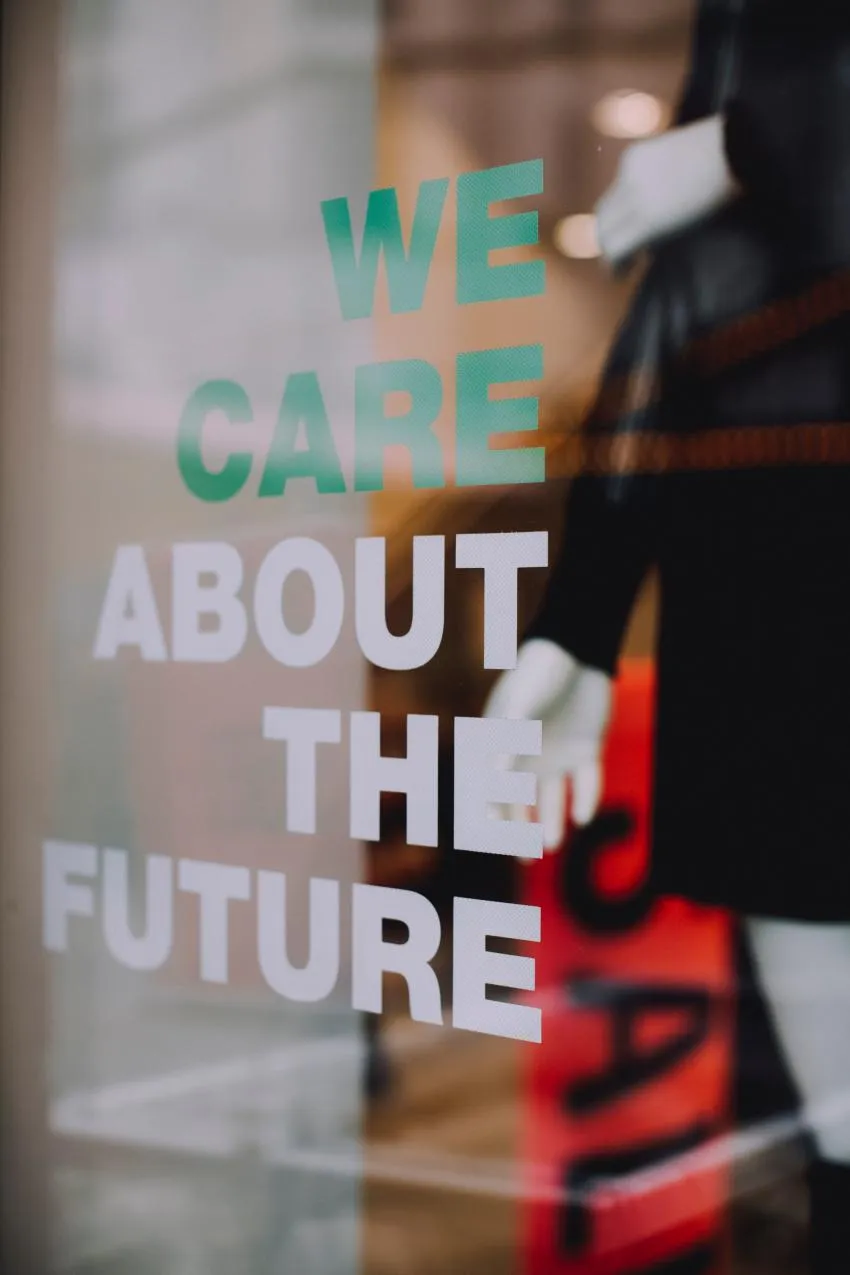Fast Fashion: How Much Are You Willing *not* To Spend?

Shopping used to be an essential but rare outing made when the seasons changed in order to properly dress for the weather. Now, shopping is a form of entertainment that we do for fun, to follow trends, and not to wear these items for long. It's hard to believe that only twenty years ago we were buying 60% less clothing than we are now in 2021 reported by an article in Business Insider. Not only are we buying over twice as many garments, but we wear them for only a short period of time because they go out of fashion or tend to wear out.
It's time to invest our money in clothing made by sustainable brands and meant to last for longer. In the end, you end up saving money by not shopping as frequently. You also are making a positive impact on the world, environmentally and socially, just by changing the way you shop.
What even is 'fast fashion'?
Fast fashion can be defined as "inexpensive clothing produced rapidly by mass-market retailers in response to the latest trends."
This can include some of your favorite brands such as H&M, Zara, and Forever 21. Often clothing made for fast fashion does not last as long because it is made by a fast supply chain and for a lower price.
Fast fashion can be defined as "inexpensive clothing produced rapidly by mass-market retailers in response to the latest trends."
Based on research done by the Biomedical Health Journal, 80 billion garments are purchased each year. They have also found that around 90% of clothing sold in the United States, which is the highest consuming clothing country, is made with cotton or polyester.
Fast fashion materials like cotton or polyester are dangerous because cotton requires a lot of water and pesticides to produce while polyester contains oil. Both materials cause significant health impacts while manufacturing them into clothing.

According to Health Journal dying the clothes involves a process that is dangerous for the environment. The wastewater from the hazardous dyes is flushed back into local water systems releasing toxins to animals and residents who may drink the water.
The fast fashion industry has also taught us to believe clothes are something to throw away and start new for a different season or year. An American will throw away up to 80 pounds of clothing a year. Other pieces may end up in second-hand stores which is why thrift shops are considered sustainable as they are recycling clothing.
Although prices may be cheap, the outcomes of fast fashion may just cause too much damage to be able to pay back.
The environmental and social impact of fast fashion

The fashion industry is one of the leading causes of ocean pollution and carbon emissions.
What we do to the earth is irreversible, especially when it comes to carbon emissions and climate change. People are finally starting to realize the environmental impact we have made on the earth and how time is ticking to make a change. The apparel industry has gone the opposite in efforts to help the environment because of the rise in fast fashion.
The fashion industry alone is responsible for 10% of the world's carbon emissions. However, a lot more damage is caused because of their short life cycle they often end up in landfills, the polyester material holding microfibers of plastics that end up in our oceans.
Clothes that do not end up in American landfills will often be sent back to lower and middle-income countries to either be sold in their second-hand stores or will be thrown away once again.
Clothing that gets thrown away in lower-income countries becomes solid waste that can clog rivers and sewers creating problems for the poor municipal waste systems. This creates only another environmental health hazard from the life cycle of fast fashion.
Most chemicals used in the production of clothes are toxic or hazardous from the dyes or what they are made from, as synthetic fibers are derived from oil. This puts those toxins into the air when wasted either from pollution, into water or waste systems, and releasing particles into the ocean.

Fast fashion has a huge social impact by the lack of regulations around dangerous working conditions where young women and children are paid minimum amounts and risk life-threatening health issues.
The production of clothing is in low to middle-income countries in order to keep prices of the clothes down and wages of the workers low. In research done by the biomedical health journal, they've found low and middle-income countries lack the support to enforce environmental safety laws and regulations that protect their health.
While working, there are many occupational hazards such as breathing in toxins from synthetic air fibers and cotton dust due to poor ventilation. Health issues reported have been life-threatening such as lung disease or cancer.
Fast fashion industries have been found according to The Borgen Project to exploit their workers, especially women or underage children. They work long hours in unsafe conditions with minimal pay. They have no kind of laws in place to protect them if a dangerous accident were to occur or to regulate the unsafe conditions they are already working in.
Why sustainable brands are worth it

Switching to sustainable fashion clothing brands may seem like a difficult jump. They are harder to find and can often be more expensive since they are made from pricier materials and in better conditions paying employees higher. However, the garments are designed to last several years versus the fast fashion's convenience of finding pieces but have a very short lifestyle.
Sustainable fashion involves what the clothes are made out of such as sustainably-grown crops and recyclable material while also how they are made.
Using sustainable fibers is one of the key ways to make an environmental change. The sustainability of a fiber refers to policies that reduce pollution and meet the lifestyle needs of those involved.
Fair Trade America and the National Council of Textiles Organization are organizations that oversee the way textiles are being produced. They can certify companies who are doing the production the ethical way.
"Greenwashing" is a term used for brands who promote their clothing as "going green" while they have not done the proper steps to produce sustainable clothes. This is something to watch out for especially in larger companies who are only trying to promote sales rather than make a change for the earth.
The Clean Clothes Campaign (CCC) was founded in 1989 with a mission to improve worker's rights in the fashion industry. They advocate improving working conditions in lower and middle-income countries, especially voicing up from women who have been found to have been harmed the most.
While the supply chain of producing fashion has a long way to go, consumers also come into play when it comes to changing the fashion industry to be more socially and environmentally conscious. Consumers must learn to shop less, wear the clothes for longer, and throw away fewer pieces of clothing.
So, where to shop sustainably:
- Girlfriend Collective
- Everlane
- Kotn
- Allbirds
- Immaculate Vegan
- Oak + Fort
- Shoplovefool
- Lucy and Yak
- Reformation
The next time you think about buying something fast and cheap, remember everything that goes into making that product. From the massive corporations who exploit young workers, low wages, and put them in unsafe living conditions to the leading cause of carbon emission and water pollution that harms our already degrading earth. Is the low cost of that clothing item really worth all of that?
Opinions and Perspectives
After reading this, I'm inspired to do a wardrobe audit and really assess what I need versus what I want.
Looking forward to seeing more innovation in sustainable textiles. There's so much potential for improvement.
The health impacts on factory workers are severe. Can't believe this isn't discussed more widely.
Started a clothing swap group with friends. It's a fun way to refresh our wardrobes sustainably.
We need more government regulation of the fashion industry. Individual choices aren't enough.
Immaculate Vegan's shoes are amazing. Finally found ethical footwear that actually lasts.
The comparison between shopping now and 20 years ago really shows how marketing has changed our behavior.
Interesting how the article traces the entire lifecycle of clothing. Never thought about where it all ends up.
Been following the 30 wears rule before buying anything new. Really cuts down on impulse purchases.
The article could have mentioned size inclusivity issues in sustainable fashion. It's still a major problem.
Oak + Fort has great minimal pieces that don't go out of style. Perfect for building a lasting wardrobe.
Learning about textile production has made me much more conscious about my purchases. Knowledge really is power.
I'm curious about the environmental impact of shipping when buying from sustainable brands overseas.
The fashion industry won't change unless we change our shopping habits first. It's about consumer demand.
Just calculated how much I spent on cheap clothes last year. Could have bought several quality pieces instead.
We need more education about clothing care. Most people don't know how to make their clothes last.
Started washing my clothes less frequently and air drying them. They last so much longer now.
The part about clothes clogging rivers in developing countries is heartbreaking. Our waste is literally drowning them.
My local thrift stores are getting expensive now that secondhand shopping is trendy. It's frustrating.
I appreciate that the article addresses both environmental and social impacts. They're equally important issues.
Wonder how much of this waste could be prevented if clothing brands offered repair services.
The article mentions Fair Trade certification, but there are so many different certifications it gets confusing.
Been mending my clothes instead of replacing them. It's surprising how many items can be saved with basic sewing skills.
What about the role of social media in driving fast fashion? We're constantly pressured to wear new outfits.
I've found Kotn's quality to be incredible. Their transparency about production is refreshing too.
The statistic about 90% of US clothing being cotton or polyester is eye-opening. We need more material diversity.
Started following the one in, one out rule for my wardrobe. Really makes me think twice before buying anything new.
I visited a clothing factory in Southeast Asia once. The working conditions were exactly as bad as described here.
The impact on water systems in developing countries is devastating. We're basically exporting our environmental problems.
My grandmother used to make her own clothes. Maybe we need to return to those skills instead of constant consumption.
Love that the article explains greenwashing. So many brands try to fool us with vague environmental claims.
After reading this, I checked my closet and realized how much polyester I own. Time to make some changes.
The article could have mentioned more about rental services. They're a good option for occasional wear items.
Lucy and Yak makes amazing jumpsuits. They're pricey but the quality and ethical production makes it worth every penny.
I'm trying to be more sustainable but finding it hard to resist trendy pieces. Any tips for breaking the fast fashion habit?
Anyone know good sustainable brands for men? The list seems focused on women's clothing.
The Clean Clothes Campaign seems like they're doing important work. We need more organizations fighting for workers' rights.
I've had my Reformation dresses for years and they still look perfect. The higher initial cost definitely paid off.
The information about polyester releasing microplastics in the ocean is terrifying. I'm trying to avoid synthetic materials now.
We can't ignore that fast fashion made style accessible to lower income people. The solution isn't just expensive sustainable brands.
Just switched to buying mostly sustainable basics and mixing with thrifted statement pieces. My wardrobe feels more intentional now.
The article mentions cotton requiring lots of water and pesticides, but what about bamboo? I've heard it's more sustainable.
I've found secondhand shopping on apps like Depop to be a great middle ground between affordability and sustainability.
Anyone else noticed how some big brands are guilty of greenwashing? They make small eco collections while continuing massive unsustainable production.
The working conditions described in the article are horrifying. I had no idea so many children were involved in clothing production.
Let's be real though, those sustainable brands listed are still pretty trendy and might not stay in style much longer than fast fashion.
I started thrifting more and it's amazing what you can find. Plus it feels good knowing I'm not contributing to new production.
The statistics about carbon emissions from the fashion industry are shocking. 10% of global emissions is massive!
You make a fair point about affordability, but I've found buying fewer, better quality pieces actually saves money in the long run since they last longer.
While I agree fast fashion is problematic, sustainable brands are just too expensive for many people. Not everyone can afford $100 basics.
I've had great experiences with Everlane. Their items last so much longer than my old fast fashion pieces, definitely worth the investment.
The 80 pounds of clothing waste per American annually really puts our consumption into perspective. We need to do better.
Does anyone have experience with Girlfriend Collective? Their prices seem high but I'm wondering if the quality justifies it.
I've been trying to build a capsule wardrobe and buy less. It's actually liberating to have fewer, better quality pieces that mix and match well.
The part about wastewater from dyes being flushed into local water systems really disturbs me. I can't believe we're poisoning communities just for cheap clothes.
I never realized how much clothing consumption has increased in just 20 years. 60% less in 2001 is mind-blowing!
